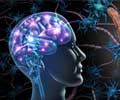Huntington disease (HD) is caused by a defect on chromosome four and is an inherited neurodegenerative disorder.

Using data from the ongoing PREDICT-HD study and led by Dr. Elizabeth Aylward, author and Associate Director at the Center for Integrative Brain Research, Seattle Children's Research Institute, researchers examined whether neuroimaging measures can improve the accuracy of prediction of disease onset.
The PREDICT- HD study is an international, multi-site, long-term study of individuals who carry the gene mutation for Huntington disease but entered the study prior to onset of diagnosable motor impairment. Participants underwent structural magnetic resonance imaging (MRI) scans, which allowed for the comparison of individuals who developed HD during the course of the study and those who had not yet been diagnosed with HD.
They found that striatum and white matter volumes in the brain were significantly smaller in individuals diagnosed 1 to 4 years following the initial scan, suggesting that these volumetric measures can assist in determining which individuals are closest to disease onset.
"We believe that the results of this study will be important in designing future clinical trials for individuals who have the Huntington disease gene mutation, but who are not yet showing symptoms. We also believe this group of individuals is well suited for drug intervention studies, as their brain involvement is not as severe as those who have already been diagnosed," said Dr. Aylward.
"Huntington disease can be considered a model neuropsychiatric disorder, since it is caused by a single gene and has such predictable and well-characterized brain changes. It may guide thinking about other disorders with genetic contribution, such as schizophrenia," commented Dr. Christopher A. Ross, co-author and Professor of Psychiatry, Neurology and Neuroscience, Johns Hopkins University. "If we could better understand the natural history of brain changes in schizophrenia, for instance, we may be able to identify genetically vulnerable individuals, and intervene therapeutically, not just to treat symptoms, but to alter the biology and course of the disease."
Advertisement
For now, these results may enhance the formulas used to calculate age of onset and help aid in the planning of future clinical trials aimed at delaying disease onset.
Advertisement
Perhaps more importantly, Dr. Krystal concluded that "the development of good disease staging using MRI in Huntington disease could assist investigators studying novel treatments and affected individuals and family members anxious to learn about disease progress."
Source-Eurekalert













